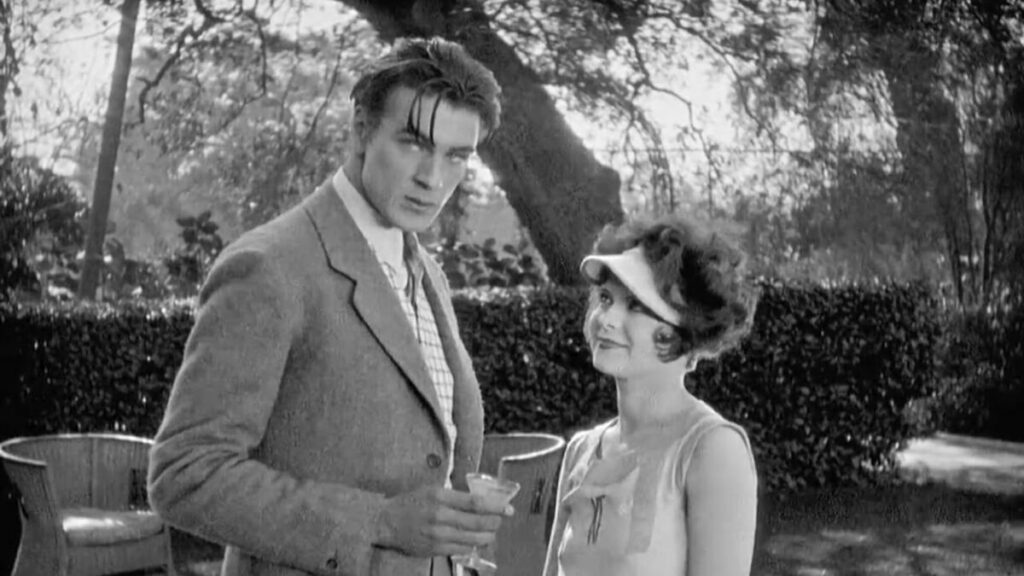
The essential “It” girl and Hollywood’s first sex symbol Clara Bow gives a rather restrained performance in the Frank Lloyd melodrama Children Of Divorce (1927). The verve and youthful recklessness of Bow’s earlier pictures is only glimpsed in Lloyd’s film. Children Of Divorce is very much of its moment in its treatment of divorce in polite society. Divorce had a tremendous stigma to it and Paramount Pictures addresses these issues with a tremendous gravitas that is only countered by Clara Bow’s presence.
Frank Lloyd’s Children Of Divorce is a very typical love triangle. The film opens at a convent school where two best friends, Kitty and Jean, bond over being children of divorce. Then one day Ted, Kitty’s former neighbor, scales their wall and promises to marry Jean when all three have grown up. Lloyd’s film then moves ahead in time to a garden party where the three reunite as adults. Kitty (Clara Bow) breaks up with her beau Vico (Einar Hanson) to marry Ted (Gary Cooper) who was rejected by Jean (Esther Ralston), despite her love for him, so that Kitty could have his money. Ever the tragedy, Children of Divorce ends with Kitty committing suicide so that Ted and Jean could be together.
Children Of Divorce is primarily elevated by Clara Bow’s performance. Every second that Clara Bow is on screen she is physically occupied; brimming with a kinetic energy as if her small body were unable to contain all of her emotions. Like Louise Brooks, Clara Bow was a much more modern actor than most film stars of the silent and early sound era. There’s a moment where Lloyd goes in for a close-up on Clara Bow when Kitty decides to commit suicide that conveys a dozen internalized dramatic beats. Bow is electric in this moment of despair as the viewer sees Kitty’s determination to die cross her perfect features. Though this is the pinnacle moment of Bow’s performance in Children Of Divorce, each of her scenes is wildly affecting. Of her co-stars in Children Of Divorce only Gary Cooper comes close to matching her in terms of giving a modern film performance.
Lloyd’s direction is workman-like and indicative of his role as an early journeyman director. Josef von Sternberg did some uncredited work on Children Of Divorce but there’s no record of which specific scenes were his. However there are some highly stylized images in the film that resemble von Sternberg’s signature aesthetic. One of these occurs in the scene detailed above. Once Kitty has decided to die, she turns and leaves her sitting room, passing through two successive doorways. The depth of this shot and the expressionistic use of shadows looks like classic von Sternberg.
The character of Kitty intersects Clara Bow’s own biography in some disturbing ways. This may account for the power of Bow’s performance in Children Of Divorce. However, if one is ignorant of the details of Clara Bow’s life, one can still enjoy the glimpses of high society in the twenties in Children Of Divorce. For plot, there are a handful of silent films that tell this story in a more compelling way, but only Children Of Divorce features Clara Bow.
